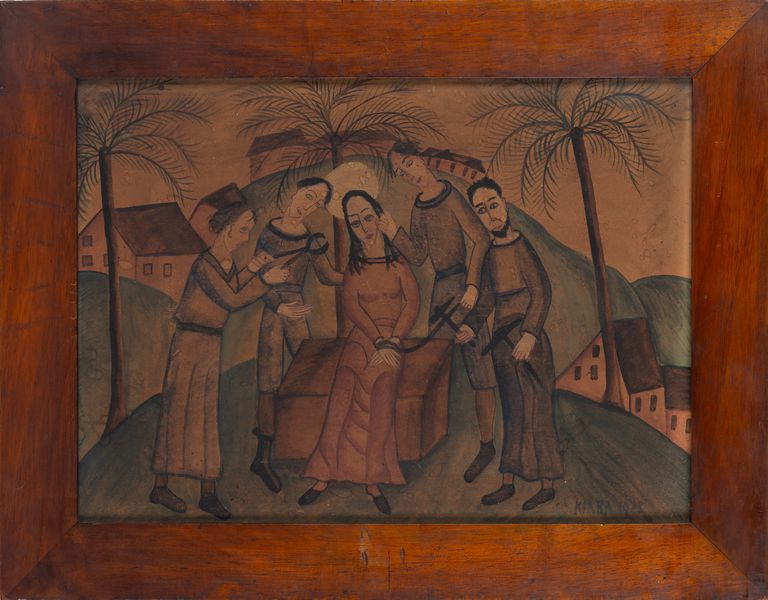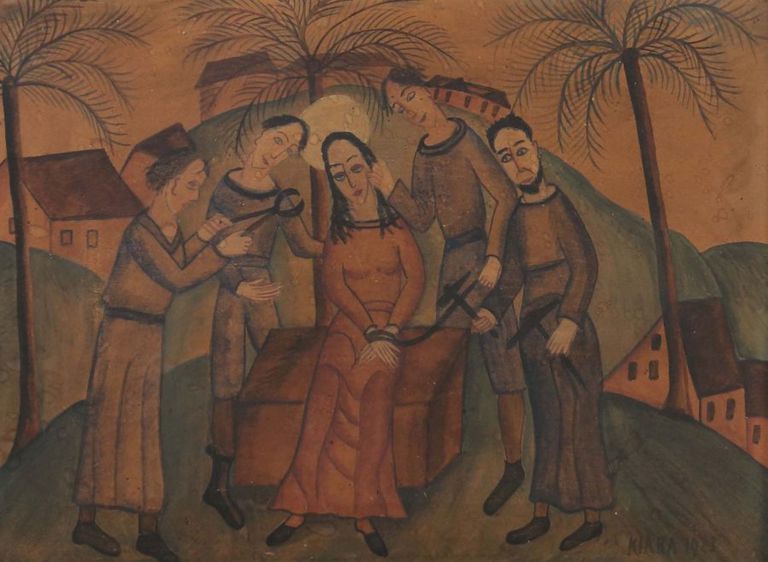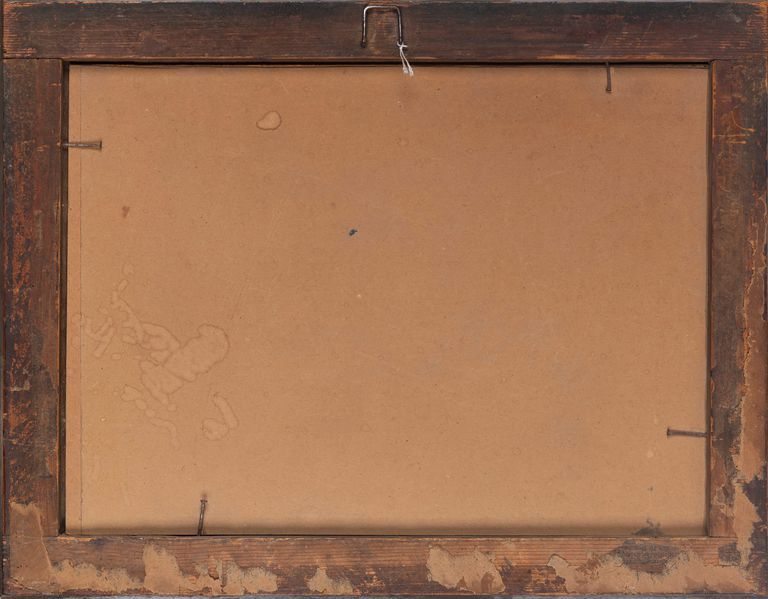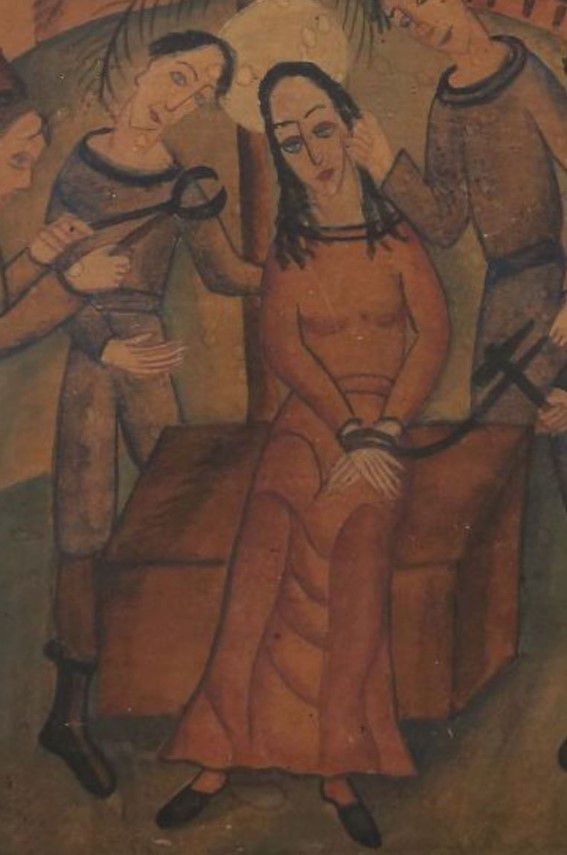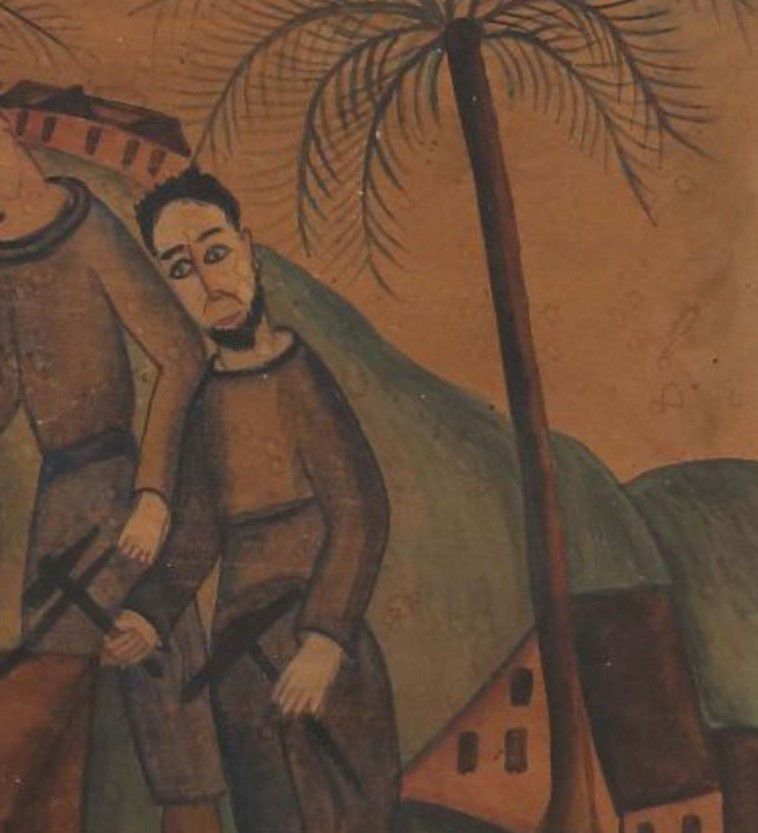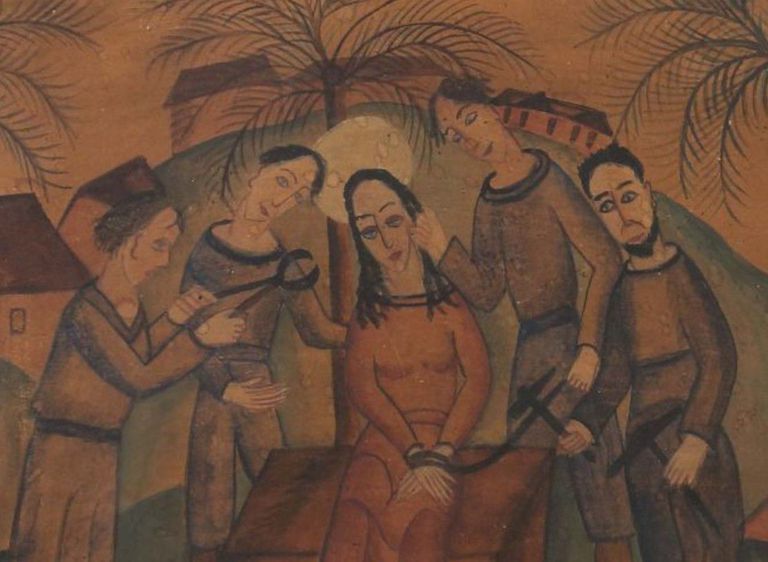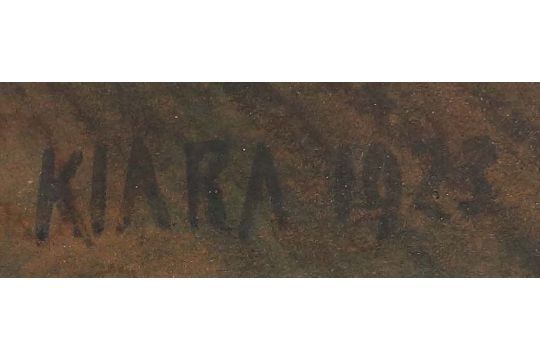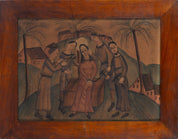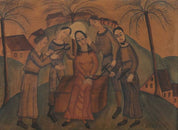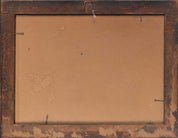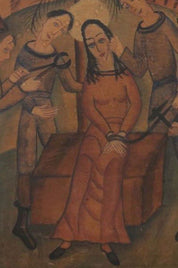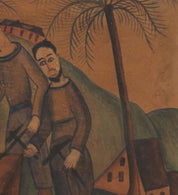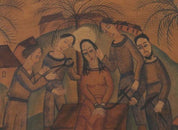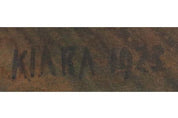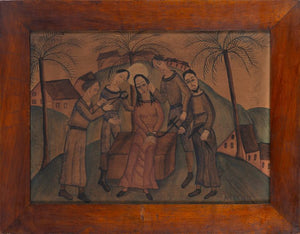Similar Items
Klara Fehrle-Menrad "Saint Appolonia"
Klara Fehrle-Menrad
Artwork Details
Artist:
Klara Fehrle-Menrad
Dimensions:
26 x 35 cm
Medium:
Gouache
Artwork Description
Saint Appolonia' by Klara Fehrle-MenradKlara Fehrle-Menrad's 'Saint Appolonia' is a poignant scene that brings to life the dramatic narrative of the titular saint, depicted in a blend of naive and Byzantine artistic influences. The composition is rich with symbolism and emotion, portraying the saint's martyrdom with a distinctive visual language that captivates the viewer.
Details:
Artist: Klara Fehrle-Menrad
Title: Saint Appolonia
Date: 1923
Medium: Gouache on Cardboard
Dimensions: 26 x 35 cm
Signature and Date: Lower right corner
Description:
'Saint Appolonia' immerses viewers in a profound and emotive portrayal of martyrdom. The central figure, Saint Appolonia, is depicted sitting on a pedestal, his hands bound and his gaze downturned. His vibrant red garments and radiant halo highlight his sanctity and spiritual significance. The expressive drapery of his attire hints at Byzantine influences, lending a sense of timeless reverence to the scene.
Surrounding the saint are four figures, each clad in somber black garments. They hold tools that are connected to the rope binding the saint's hands, emphasizing the torturous nature of his predicament. Their solemn expressions and concerted effort convey a powerful sense of both determination and solemnity.
The scene unfolds against a backdrop of rolling hills, verdant trees, and lush green grass, evoking a serene yet contrasting environment to the intense emotions depicted in the foreground. The landscape further accentuates the narrative, inviting viewers to contemplate the contrast between the tranquil natural world and the tumultuous human experience.
Condition:
While the artwork bears signs of age and staining, it retains its visual impact and narrative resonance.
About the Artist:
Klara Maria Fehrle-Menrad (often also Klara Fehrle ; born March 1, 1885 in Schwäbisch Gmünd ; † October 10, 1955 ) was a German painter. She is considered the first naive painter in Germany. She was the wife of Jakob Wilhelm Fehrle.
Klara Maria Fehrle-Menrad began painting around 1914 without any artistic training. In 1922 she exhibited for the first time with her husband, her sister-in-law Anna Fehrle and their mutual friend Reinhold Nagele in the Kunsthaus Schaller in Stuttgart.
In 1937 her panel painting Schwäbisch-Gmünd ( tempera on wood, 42 × 48 cm, 1932) was confiscated from the Ulm City Museum during the Nazi action “ Degenerate Art ”. its whereabouts are unknown.
From 1945 she was severely restricted in her artistic work due to illness.
Participation in exhibitions (excerpt)
1922: Group exhibition with Jakob Wilhelm Fehrle , Anna Fehrle, Reinhold Nagele in the Kunsthaus Schaller, Stuttgart.
1927: Stuttgart Secession
1953: Collective exhibition in the house "Sonnenhalde" by Hugo Borst in Stuttgart.
1982: Memorial exhibition in the Schwäbisch Gmünd Museum.
2019/2020: Networkers of modernity. 100 Years Women's Art Studies , Municipal Gallery Böblingen
Literature
Klara Maria Fehrle-Menrad. In: Hans-Dieter Mück: Stuttgart Secession - Exhibitions 1923-1932, 1947 . Publisher: City Gallery Böblingen, Gallery Schlichtenmaier Grafenau. tape 1 . Graphic print Stuttgart, Stuttgart 1987, ISBN 3-89298-009-8 , p. 123 .

